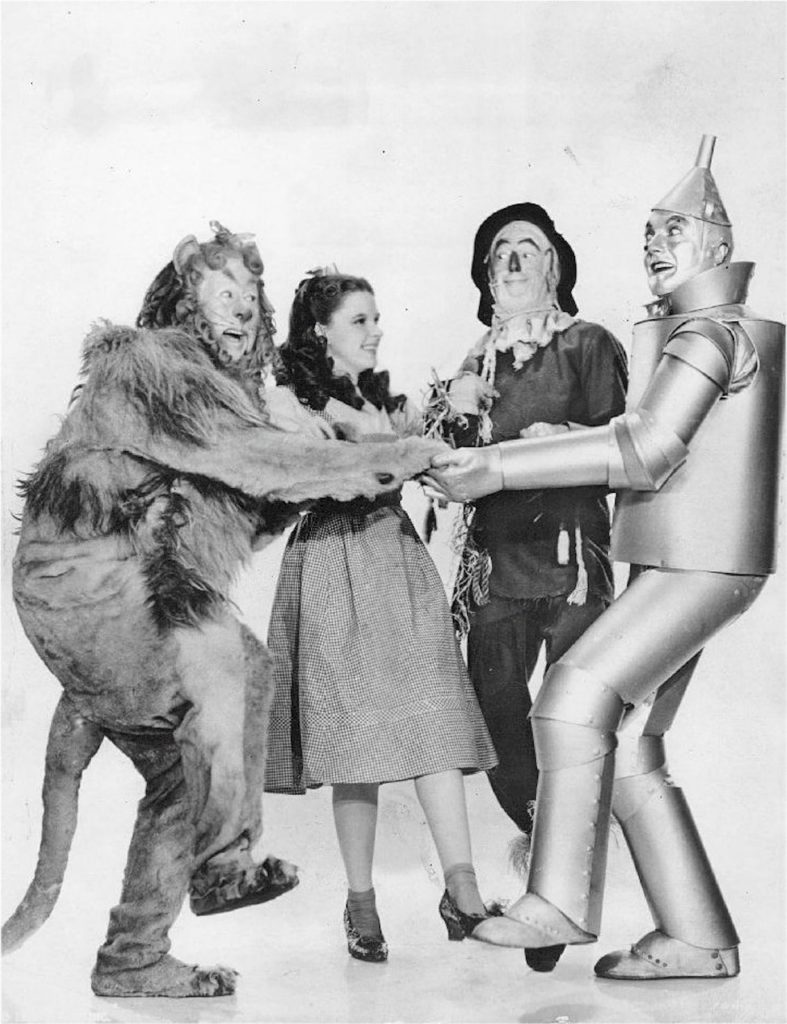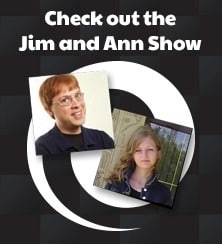
How can a brand, company, content team, or marketing firm possibly navigate this landscape safely, much like Dorothy and Toto through the wonderful land of Oz? We have the secrets, but first, let’s get some misconceptions out of the way.
We’re Not in Kansas Anymore
Someone completely new to online content marketing might find themselves in a strange new land, which is somewhat similar to the world they know (journalism, marketing, and branding are not new concepts in the Internet age) but ultimately quite different.
This dream-like online landscape is by and large a happy place, where everyone has their own unique voice and social media presence. However, there are always villains; the Internet is plagued by dissent, isolationism, and strong opinions not based on facts. Meanwhile, everyone wants to get “home,” or to the top of the search rankings.
Pulling Back the Emerald Curtain
Getting this done costs brands millions of dollars, and each high-end marketing team boasts its own “special sauce.” For smaller companies trying to keep up, it can feel like a constant barrage of numbers. Clients are often petrified of the wool being pulled over their eyes.
What you’re told is a wizard might actually just be a man behind the curtain. Many SEM and SEO companies are providing incredible value, but when the market is over-saturated with low-quality providers, it’s hard to recognize when one is better than another. It’s also very hard to prove quality in an area that’s essentially subjective.
A Horse of a Different Color
The result is that many companies have become more critical of the content they get, but their criticisms aren’t necessarily essential to the framework of “great content.”
Great content has nothing to do with salesmanship, for instance; it probably won’t sell your products. It also might cost a great deal or require a great deal of time; these are also not good metrics to be scrutinizing. Lastly, brands look at virality and social metrics to prove worth, without realizing that virality is very unlikely and often not the goal.
There are many different types of content, which all need their own metrics and often call for specialized knowledge to find and scrutinize those metrics. Without handing over the ruby slippers to your teammates, how do you know that they’re leading you in the right direction?
What should one look out for on this journey, which for every client can be bumpy and full of twists and turns throughout a colorful alien world? Is content marketing worth investing in at all?
Is it All a Bad Dream?
The plot of The Wizard of Oz is not about conquering the witch, and likewise, this is not about beating your competitors. It’s about leaving them in the dust. It’s about getting home – to the top of the search results, to a comfortable place where you have a big group of customers and fans around you who love you.
Everyone is hoping for that. Brands are clicking their heels, saying to themselves,
“There’s no place like home. There’s no place like home.”
Dorothy eventually wakes up. Will we? Is the world of SEO, SEM, and content marketing just going to go away like a bad dream?
Maybe. We’re not sure. Perhaps an asteroid will blow up all of our satellites and destroy our international communications, Revolution-style. Perhaps a new bit of technology will make Google and its algorithms irrelevant. Perhaps what we know about SEO will entirely change overnight, like it has in the past with events like Panda and Penguin updates.
But it’s unlikely to go away. So brands are stuck: They don’t know what “great content” is made of or how to measure it, but they know they must take part in it.
There’s No Place Like “Home”
But branding is what has been around since the 1800s, and great content is what will last the longest. Marketed properly, great content will have a lasting impact.
While our ability to “go home” has apparently always been inside us, there’s a reason why we’re here now. We can’t close our eyes and click our heels and hope to get to where we want to be. We have to navigate Oz, fight the battles, find the wizard, and rise to the top first.
There are three essential ingredients of “great content.” Really excellent content features one; some of the best content out there features all three. It’s time to follow the yellow-brick road of content marketing and see what are the essential features that set great content apart from the vast, Oz-like
landscape:
Great Content Needs …
… A Brain
“Some people without brains do an awful lot of talking, don’t they?” — Scarecrow
People love big data. They especially love when they can see a bunch of big data organized in an easy-to-comprehend way. But being sure your content has “a brain” is not always about charts on Forbes or Neil DeGrasse Tyson talking at length about physics (though both do really well). If the Web was only drawn to what was smart, then the densest reports your accounting team hands you would be the most shareable. It’s not. Numbers are important and data is interesting, but not if no one can easily comprehend them.
That’s because this category boils down to this: While it’s important to be smart, it’s even more important to make your users feel smart.
While it's important to be smart, it’s even more important to make your users feel smartClick To TweetThere are variety of ways one can accomplish this:
- Summarizing complicated information in a way that’s easy to comprehend quickly (how-to articles or lists) (examples: About.com, Wikihow.com)
- Offering free advice from industry experts or information that would normally require years of knowledge (expert articles, video talks, question-and-answer content) (example: TED Talks)
- Organizing a simple, visual overview of a collection of hard data (infographics and visuals) (example: Visually)
- Providing a completely new, good idea — especially if it helps users avoid paying for something (DIYs, scroll-oriented articles, and tips) (example: Pinterest)
That’s how a really successful blog post about creating your own DIY wedding centerpiece is essentially the same as a huge diagram of data collected from across the country in a matter of weeks. They both have a brain — they require creative people with a high level of knowledge and expertise — while also making the user feel smarter. These efforts don’t necessarily require hours of crunching data and an IT person crying over algorithms, but they do need to be based on at least some facts that weren’t pulled straight from a wiki or based on general knowledge anyone would have.
If your content doesn’t have a brain, it’s obvious. It’s most likely repetitious or unoriginal and isn’t based on any set of unique knowledge. As Rand Fishkin has explained, this type of content that’s “as good as the other guy” won’t do well. You have to be better, and being better requires sharing the wealth of your specialized knowledge, or your writers’, or your team’s.
… A Heart
“You don’t know how lucky you are to not have one. Hearts will never be practical until they can be made unbreakable.” — The Wizard
“But I still want one.” — The Tinman
Brands have spent billions in the effort to make you think that they might be relatable — even and especially ones that are objectively abhorrent morally.
That’s because the cold, lifeless brand has no business being on the Web. It’s a social world, and while one can bemoan that Twitter is a popularity contest and that Facebook is difficult for gaining a following, for both SEO and content marketing, social signals are very important.
You get those signals by opening up your company’s heart and soul to the world, showing off its best side, building intimate relationships with users, and interacting in a way that’s uncomfortable for many brands, companies, and people. Without interaction, you won’t get good social sharing, and without showing your users or customers that you love and appreciate them, you won’t get interaction.
In terms of content creation, this can be actualized in several ways:
- Tightly controlling the friendly “voice” (social media campaigns) (example: How about everything on Twitter?)
- Developing a small section of your site that’s devoted to user-generated content (forums, testimonials, and blogs) (example: Moz.com’s forums)
- Spotlighting or recognizing great brand evangelists (guest posts, contests) (example: Loot Crate’s contests)
Just like how someone can spot a fake smile from across the room, users can sense falseness from a brand pretty quickly. Offer users something for their dedication. Talk to them. Act human. Act natural. You do that by being not a manufacturer but a giver.
The brain is all about making one feel smart, and the heart is all about making them feel loved (or at the very least respected).
The brain is all about making one feel smart, and the heart is all about making them feel lovedClick To Tweet… The Nerve
“True courage is in facing danger when you are afraid…” — The Wizard
Something Internet denizens love more than a relatable brand is controversy when someone takes a strong stand on something. Being brave enough to evangelize and get people excited about content is one of the most difficult things to do in the content marketing world.
This is problematic because it’s the nature of many businesses to dither in order to avoid offending anyone. Just like the cowardly lion, they’re petrified of any whiff of dissent. Careers have been utterly destroyed over unpopular tweets. It’s one of the worst times ever for bad PR, and that’s enough to make social media managers shake in their boots.
But it’s exactly in this time of doom and gloom that people get most inspired by bravery. When you stand up for something you believe in, people respond. It’s inevitable that you’ll eventually offend someone, so why not offend closed-minded, hateful people? Good content in this category doesn’t tiptoe around issues or kowtow to bullies.
Here are some ways to show off your company’s nerve:
- Create a cause and directly ask your fans and evangelists for donations (Kickstarter events and campaigns) (example: Star Wars: Force for Change)
- Stay out of the news, but show support to innocent, harmed groups (social media campaigns) (example: #LoveWins)
- When company changes are imminent, incite discussion (social media campaigns, polls) (example: Domino’s branding changes)
Brands often struggle the most with this factor. Gauging when big moves like these are appropriate takes a great deal of wisdom, lots of approvals, and timing. But not every instance of having the nerve to make a stand is political. It also might be making a small tweak in a headline. For instance, “the worst Hollywood movies of 2015” might do better with the title of “the movies you feel guilty you actually saw in 2015.”
Will the second version offend people? Maybe. Will it be funnier and gather more interest? Most likely. Often, click-worthy headlines appeal to guilt-ridden, horribly offended people who want to know that there’s someone else out there who feels both good and bad about themselves.
Bravery in social media and content creation is the hardest task for most companies. But some of the best campaigns incite discussion or stand up for a cause.
Follow the Yellow-Brick Road
If your content plan doesn’t have at least some elements of these traits, you might not be as competitive as you’re hoping. Sure, your good content may get social shares and links, which is good for your site and rankings from an SEO and SEM perspective, but it’s not great for branding and building connections.




